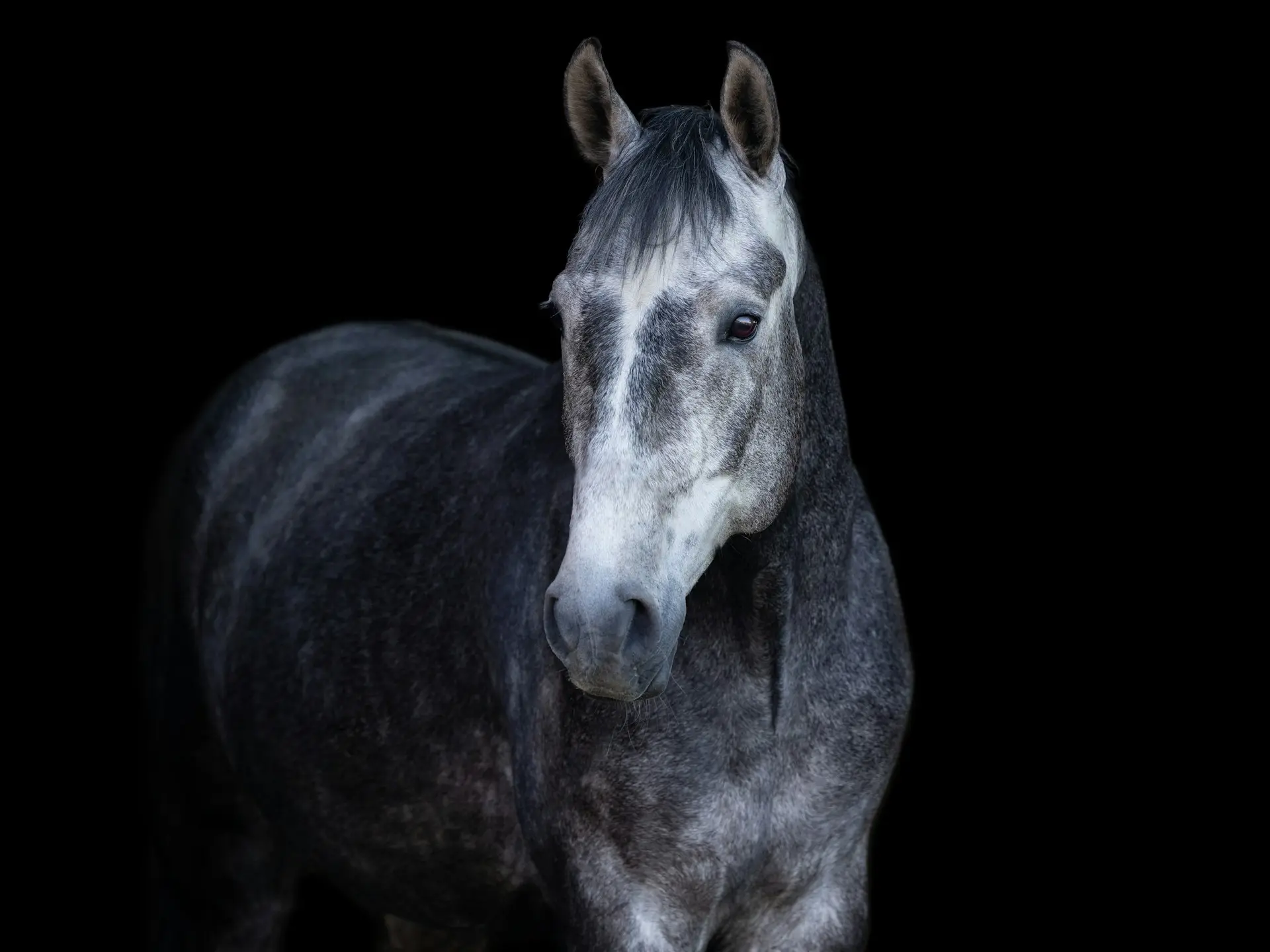
The greying gene is found in most breeds of horse and has the ability to mask all other colors or patterns, including pinto, appaloosa and roan white patterns.
Exciting Grey
The greying process is similar to that of humans, animals are born their base color and slowly become grey with age. The process often starts when foals shed their coat, but can wait several years to show. Greying will progress at different rates in different horses, but animals will eventually turn white (often around 6-12 years). You can tell roughly how old a grey horse is by how much white is in their coat.
Quick Grey Facts
- Grey gene removes pigment from hairs and skin as the horse ages
- Pigment is gradually deposited in the gut and intestines
- Greying varies between horses, breeds and base colors
- First signs of greying is usually around the eyes
- The gray gene is dominant and does not skip generations
Grey Breeds
While most breeds have the grey gene, not many are exclusively grey in color. However, there are two that are known for this beautiful coloring, the French Camargue Horse and the Austrian Lipizzan. Incidentally both breeds that have a long and rich European history.
Grey Shades
Every grey horse will go through a variety of striking stages during the greying out process, which also varies by horse, breed, base color and local conditions. Not all animals will show dappling, technically called progressive depigmentation, but it certainly makes for flashy seasonal changes. The different stages of an aging grey animal are loosely categorized below for visual reference.
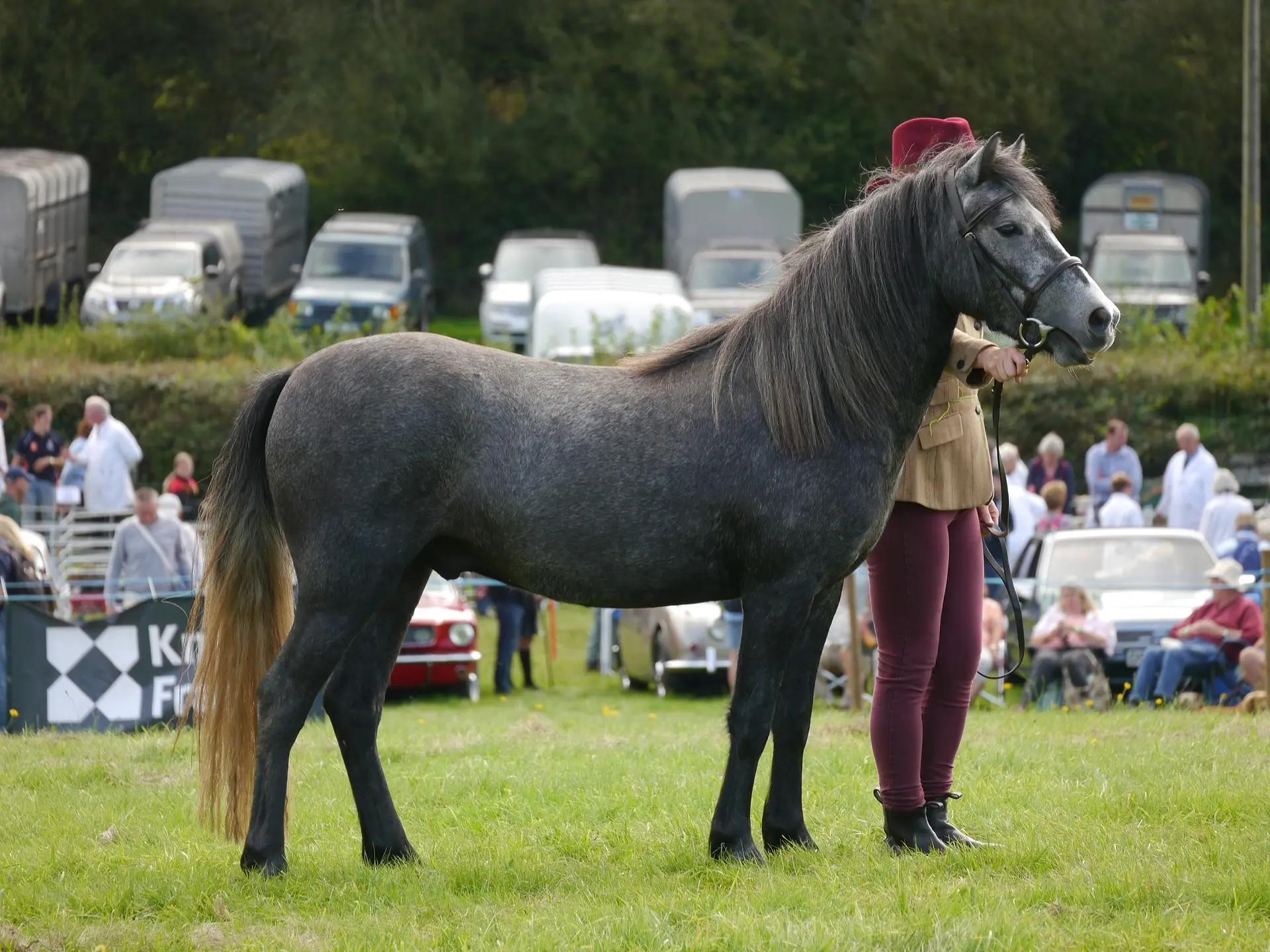 Steel grey
Steel greyThe earliest stage of greying and found on young black or brown horses. Steel grey can range from almost black to a dark grey.
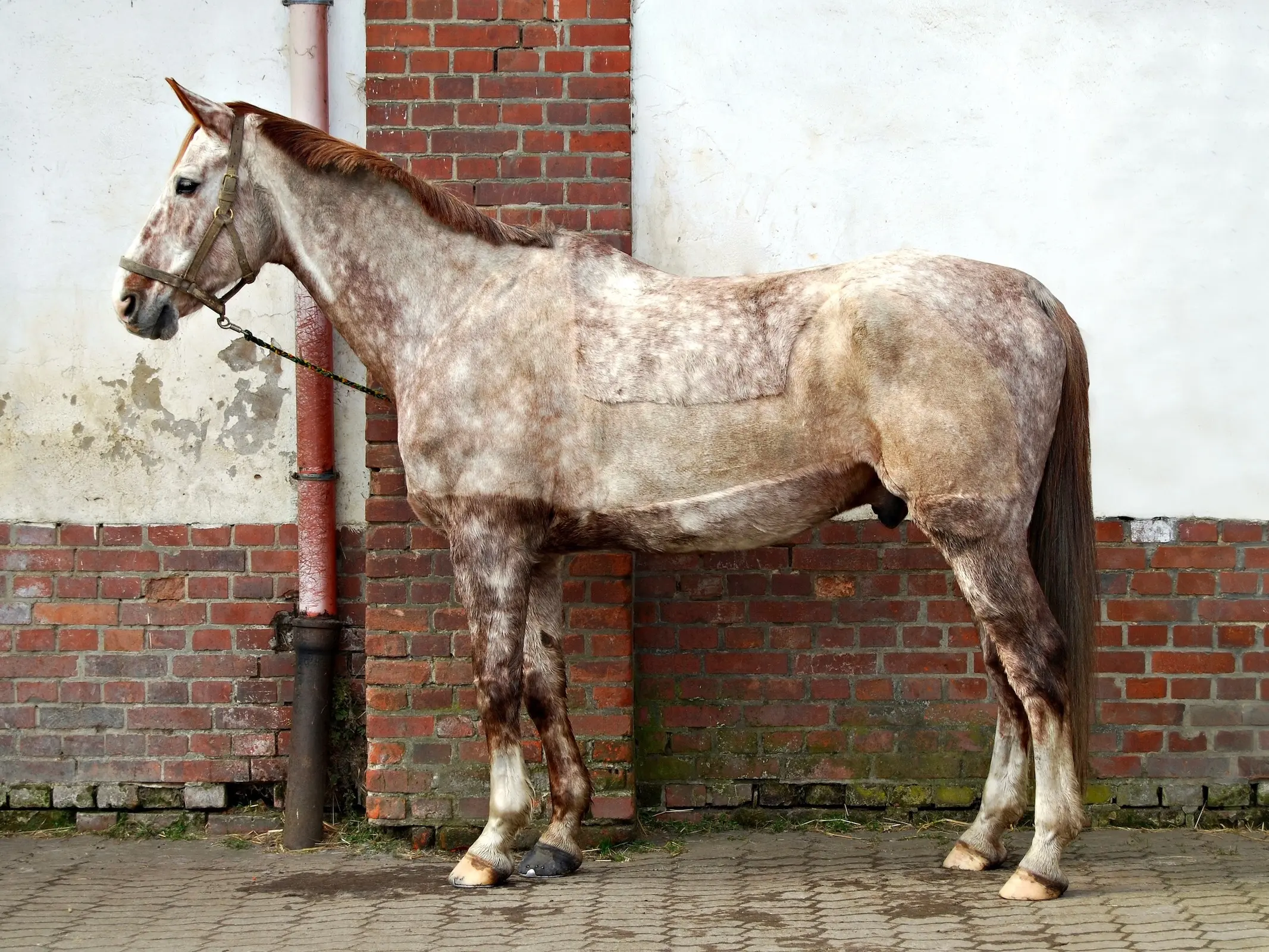 Dapple grey
Dapple greyAny base color can display dapples, but they are more obvious black or brown coats. This is the second stage of greying.
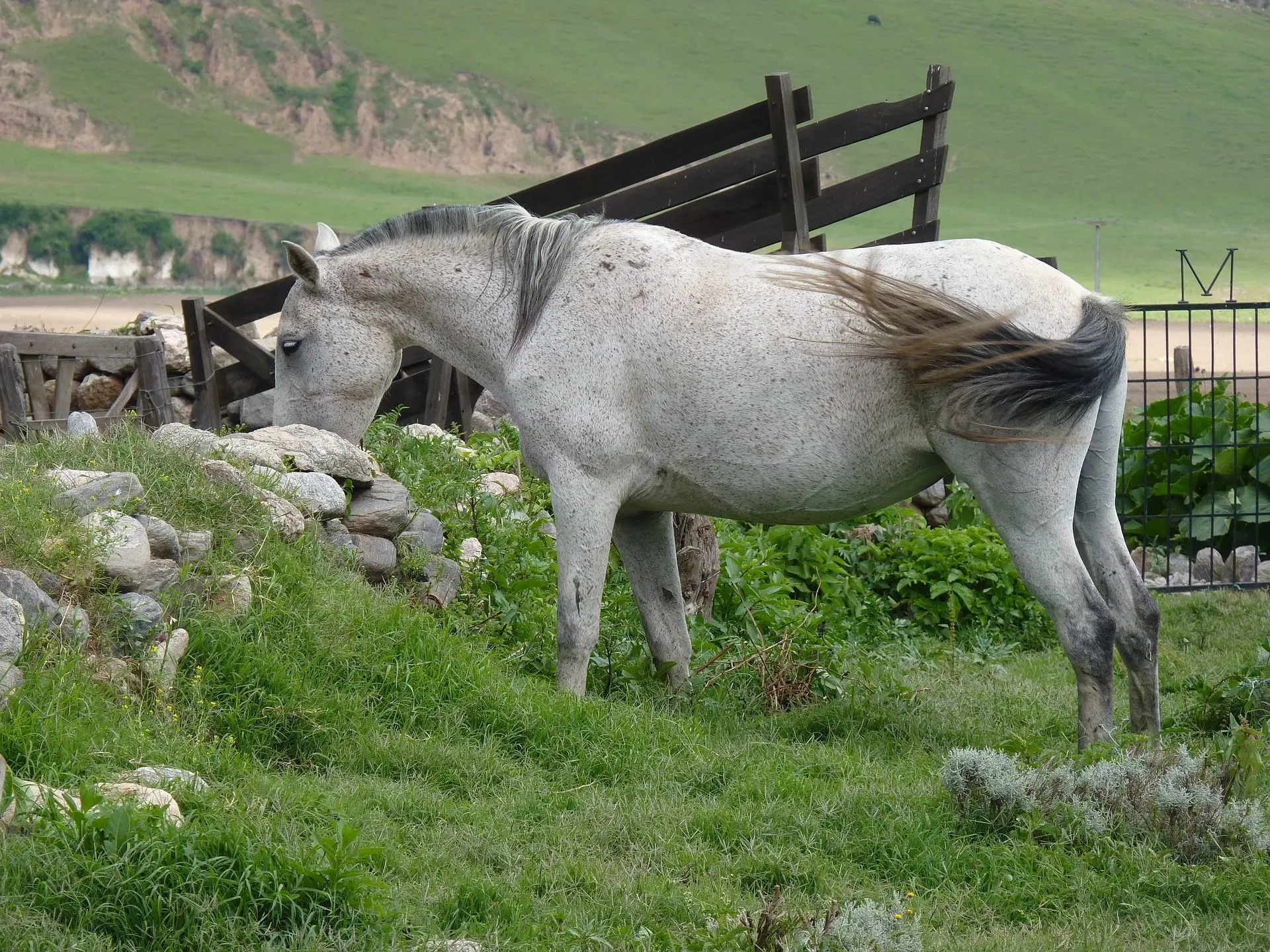 Fleabitten grey
Fleabitten greyAs grey animals get older they will become mostly white or light grey with specks of their base color throughout their coat.
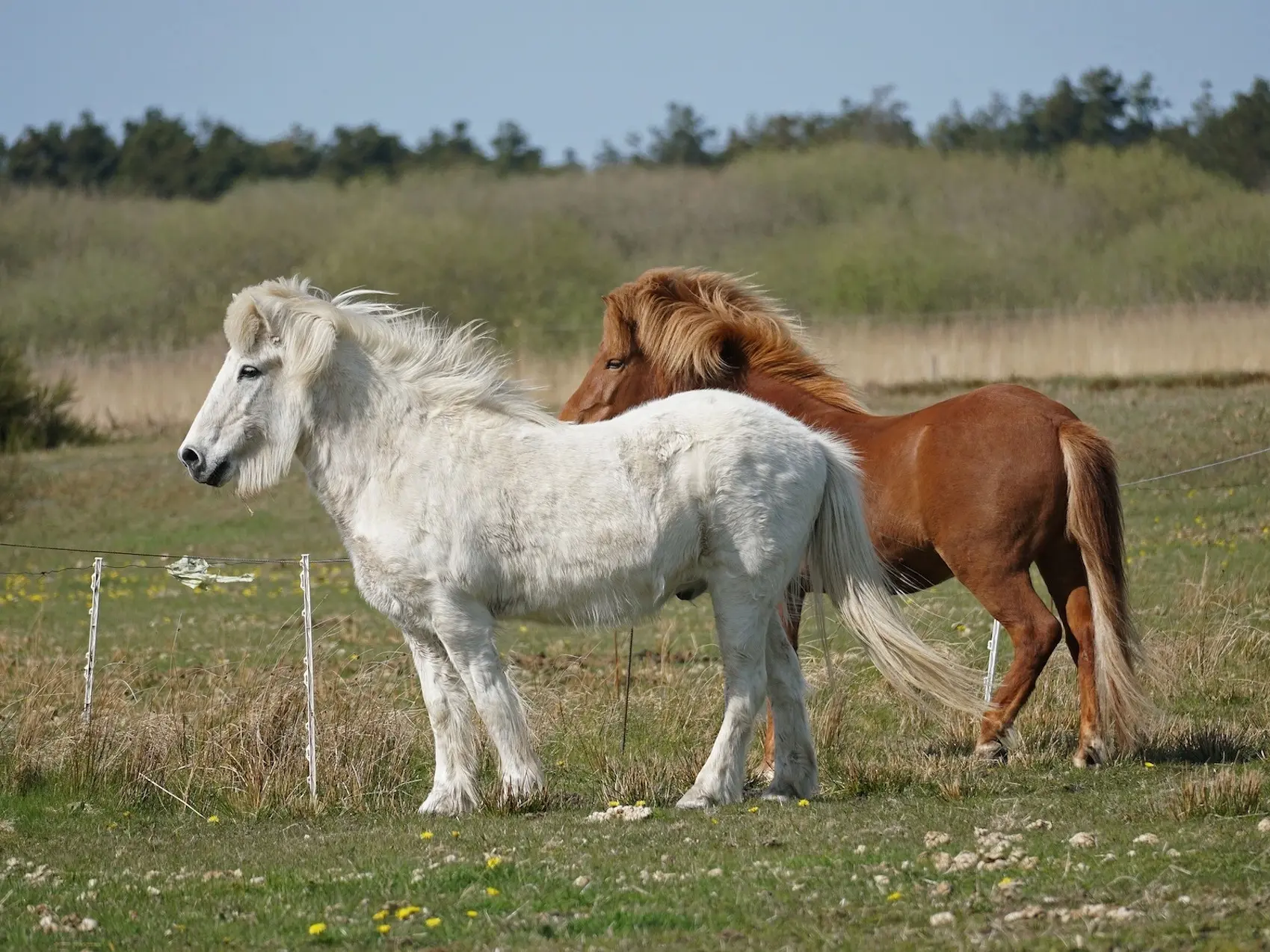 White grey
White greyWhite grey is the final stage of greying and only found in mature animals, after all of the pigment is gone from the hair.
Rare Grey Markings
There are a couple of rare markings that are specific to grey animals, how they are associated genetically is unclear.
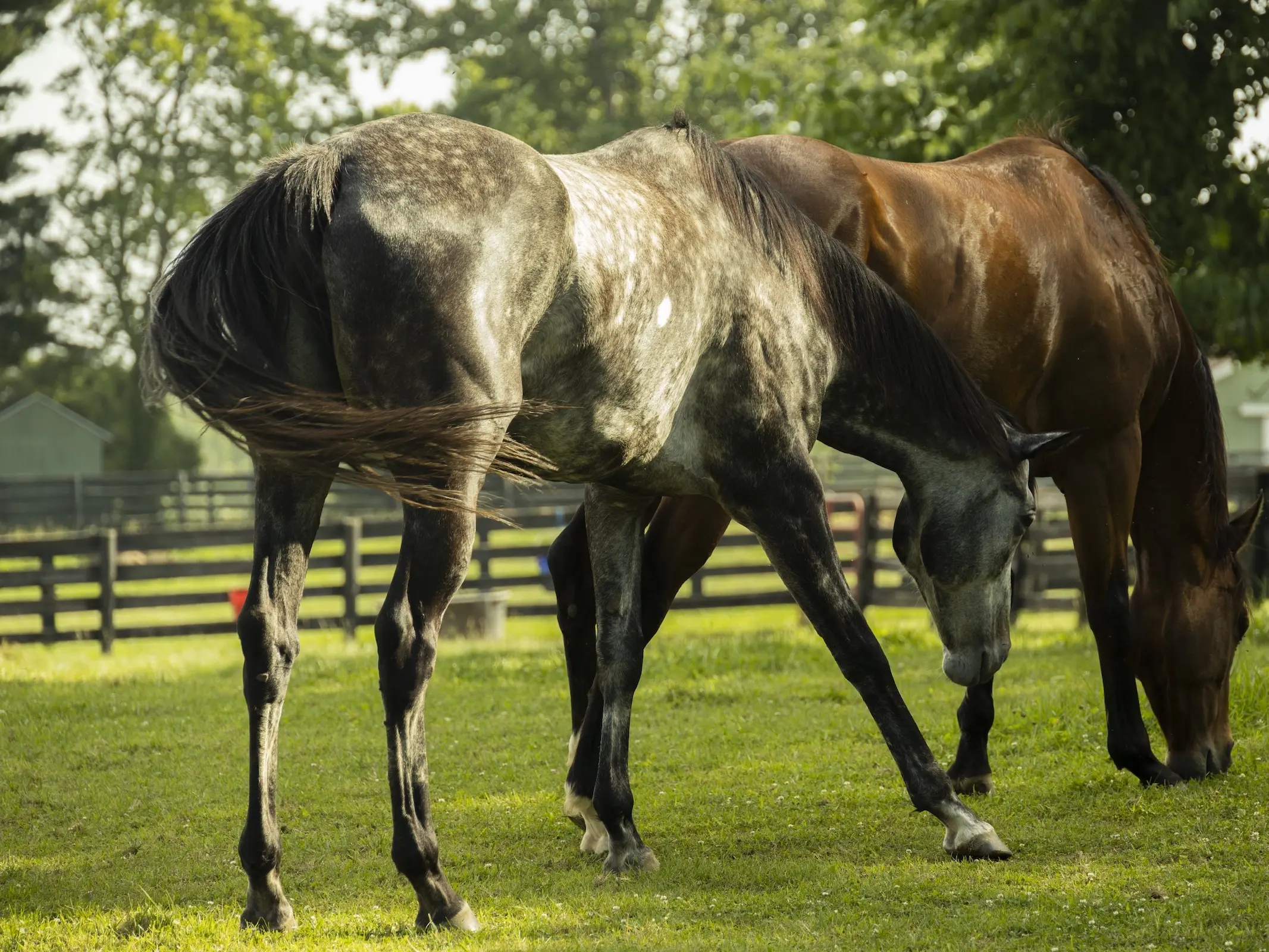 Chubari Marks
Chubari MarksChubari marks are egg-shaped white spots distributed (roughly) evenly throughout the coat. Spot edges are clean, unlike dapples.
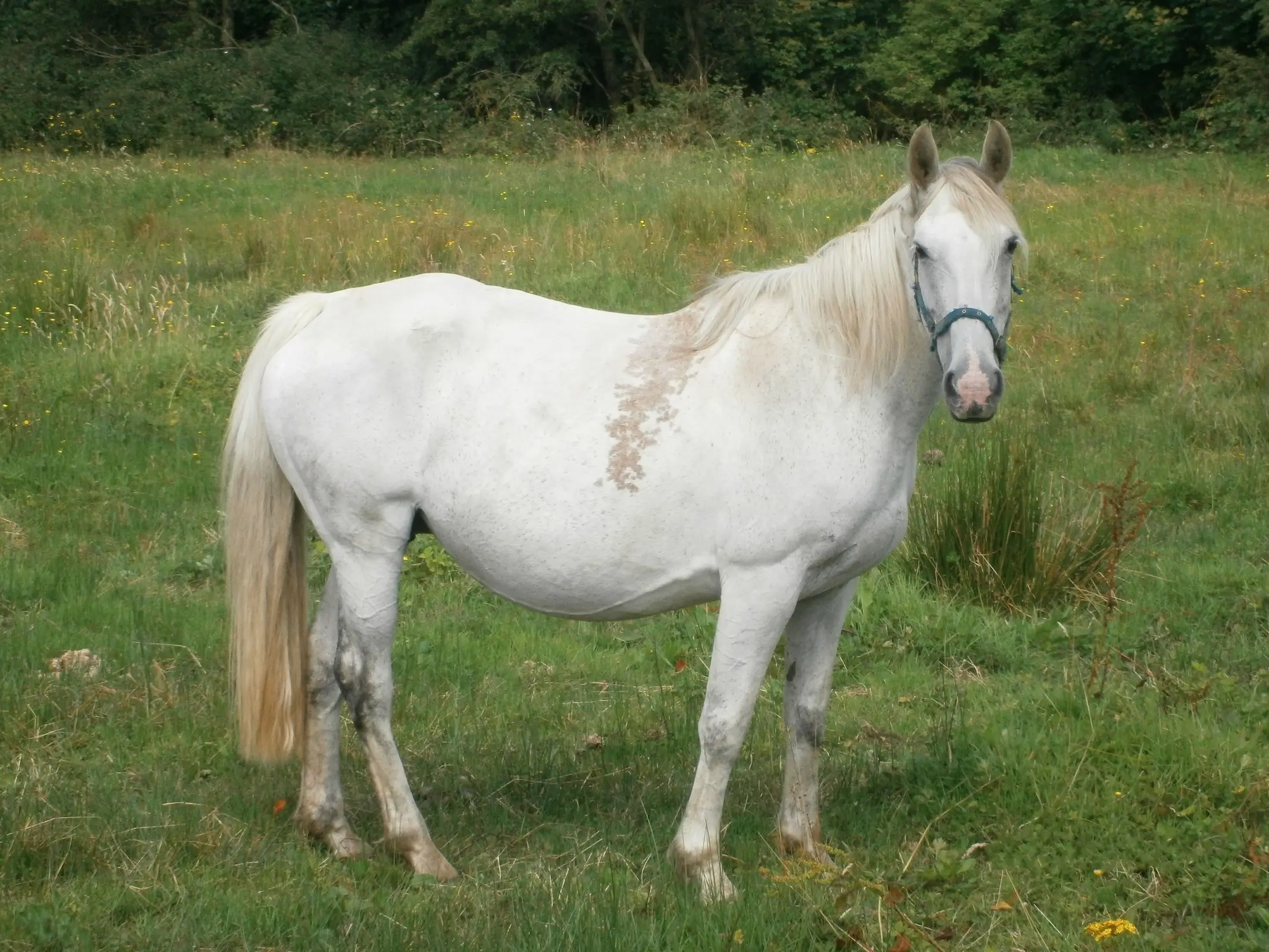 Blood Marks
Blood MarksBlood marks are patches of base coat that remain during the fleabitten and into the white stages. Often found on the neck.
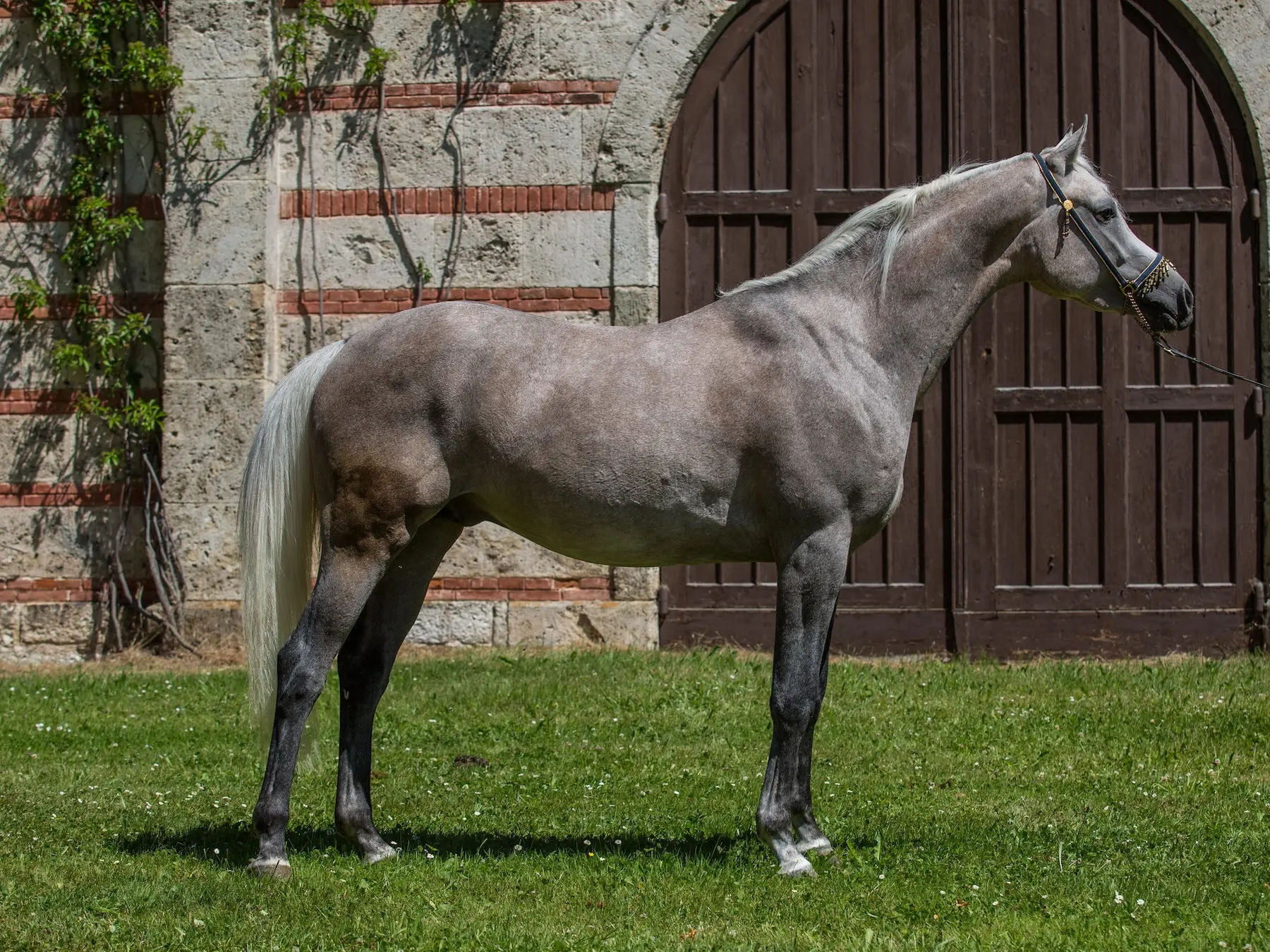 Rose grey
Rose grey